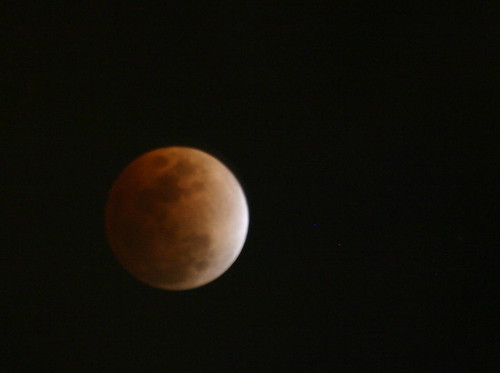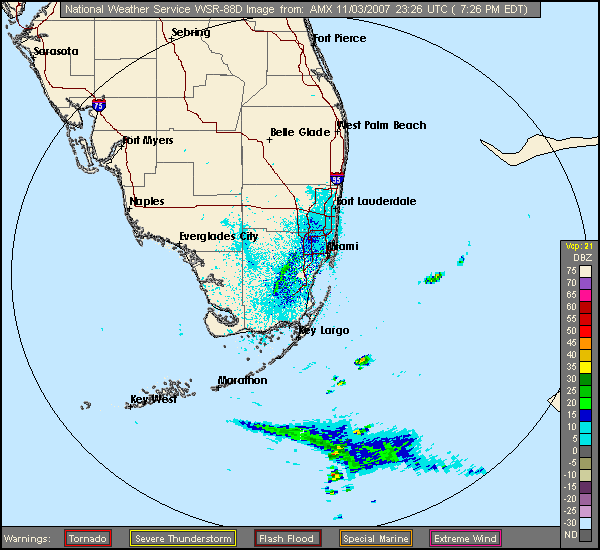Cloud cover permitted us only a few glimpses of the full eclipse of the
moon on the night of February 20. I tried to photograph it, but with
poor results. While I was watching the moon “ride” through the clouds,
I missed a tremendous photo opportunity. A passenger jet making its
downwind approach to the Fort Lauderdale Airport passed directly over
the moon’s face. Unfortunately, I was viewing this through binoculars,
not the SLR viewer of my camera. Unbelievably, another jet did the same
thing about 30 minutes later, and I missed that shot as well. This is
my best image of the eclipse, so you may guess how bad the others were!

The ancients had numerous theories about where birds spent their time after they disappeared in the fall and returned each spring. The moon figures prominently in both one of the oldest theories and in our present understanding of migration. They hibernated, hiding away in a torpid state, or, as some maintained, underwater or in the mud of marshes. Aristotle believed they transmuted back and forth between other species that were present only in the winter. Another belief was that they spent their winters on the moon.
Even many of those who recognized that birds escaped the winter by moving to lower elevations and to warmer climates had trouble imagining how the very small ones could ever have enough energy to carry out such an enormous effort. They theorized that small birds hitchhiked on the backs of larger ones. Nowadays we can actually witness the nocturnal migration of small birds by simply watching them cross the face of the moon. There is experimental proof that some birds rely on the stars for navigation, but the timing of flights in some species, such as Red Knots, is linked to the phase of the moon.
An excellent source of information about migration is this USFWS brochure: Migration of Birds, Circular 16, which is downloable as a PDF file.
For every species, there are many unanswered questions about the details of their migration. Some information can be gathered readily, such as dates of arrival and departure from various locations. Some birders are experts at identifying certain species by the sound of their calls as they pass overhead in the night. Banding and recapturing banded birds provides objective data about the movement of individuals. Color-tagging and fitting birds with radio transmitters allows tracking and observation of behavior. Isotope studies of feathers can sometimes tell where the bird was located when the feathers formed. Radar reveals the the staggering biomass of bird flights during migration. Here in South Florida the Key West weather radar clearly tracks birds to and from Cuba and other points, north and south. The National Weather Service Web site has very technical instructions on how to capture images from prior time periods, but this Badbirdz Web site does it for you.
Badbirdz carries on the tradition of Noel Wamer, who provided us with wonderful screen captures of radar loops during migration until his untimely death only a few months after we moved to Florida in 2004. The Badbirdz motto is “Keeping Noel’s dream alive, one migrant at a time.” The following is an image of a wave of birds moving towards Cuba last November:. You can view loops that cover the entire period from sunset to sunrise on November 3-4 here.













